- ALL SERVICES
- • Salesforce Consulting Services
- • Managed Services
- • Simplification of Interfaces
- • Data Migration and Processing
- • Architectural Solutions and Scoping
- • Code Review, QA and Support
- • Applications Development
- • Pre-sales and Solutions Consulting
- • Technical Audit and Support
- • Custom Applications Development
- • AI Apps
BLOG
Salesforce Adoption: Challenges and Best Strategies
• Date: November 2023 •
Estimated reading time: 8 minutes
Estimated reading time: 8 minutes
Subscribe for more useful content
We promise we'll not spam your mailbox!
By submitting you agree to receive a newsletter from Twistellar. You can unsubscribe anytime.
Early in the Salesforce adoption stages, 90% of companies are promised streamlined workflows, comprehensive insights, and seamless operations regardless of location.
However, CRM systems implemented without proper adoption strategy user input often result in additional, unproductive work for sales reps, undermining their primary objective to sell more effectively. In essence, Salesforce adoption isn't just a procedural step; it's the pivotal force steering your team and organization toward sustained success and growth.
Simply put, you won't see a return on your Salesforce investment unless your team uses it. But without buy-in across the organization and C-level, promised returns remain elusive.
What are the red flags to look out for, and what can be done about it? Let's break it down.
Table of Contents:
Signs Your Salesforce Adoption Fails
How can you tell Salesforce CRM adoption lags and users need to be more motivated to learn?
Low Login Rates
When employees consistently choose not to engage with the system, it suggests a usability hurdle. Your employees might avoid using Salesforce for their tasks, making all its capabilities nonfunctional and therefore, inefficient.
Sticking to Old Methods
The next point derives directly from the previous one.
Employees often resist change, even when the old processes are inconvenient. Familiarity with established tools and workflows can make employees more productive within their existing ecosystem. Introducing a new tool requires stepping out of the comfort zone and investing time in learning with uncertain outcomes.
Complexity Concerns and Negative Feedback
Employees will revert to their former, more well-known tools if the Salesforce platform is more cumbersome than the previous system. A difficult-to-use platform can discourage adoption and hinder productivity, prompting employees to stick to the old ways.
Negative feedback is also expected when implementing new processes. However, suppose multiple users consistently voice complaints regarding specific issues over an extended period. In that case, it indicates a genuine inconvenience with the system rather than mere pickiness on the part of the users. Paying attention to these recurring concerns is crucial to identifying and addressing the system's shortcomings.
Neglected Progress Tracking
In Salesforce, each activity is assigned a status that changes as progress is made.
For instance, leads can be categorized as New, Unqualified, Reviewed, or Converted as processed.
Employees are not utilizing the system effectively when activities consistently remain in the "New" status despite known progress. This suggests a lack of understanding of the system's potential benefits and a reduced motivation to engage.
Inconsistent and Negligent Record-keeping
Accurate and reliable data entry is crucial for building trust in the system. When users enter incorrect, duplicate, or incomplete data, it undermines the entire system's credibility.
Sales and service representatives cannot afford to rely on erroneous or insufficient data when interacting with customers. Consequently, employees may treat the platform with suspicion, wasting time spent double-checking information or resorting to other means of storing records.
Why Does Salesforce Adoption Fail?
A successful Salesforce implementation requires not only technological changes but also cultural shifts. To ensure a smooth implementation process, it is imperative to adopt a holistic strategy that addresses the following challenges:

Causes of Low Salesforce CRM Adoption
Lack of Clarity and Planning
Teams may need more understanding regarding its comprehensive capabilities. Please communicate the platform's benefits effectively to ensure team buy-in, potentially resulting in missed opportunities for improved insights.
Implementing Salesforce in phases is crucial to avoid overwhelming your team. Without clear timelines and strategic planning, there is a risk of encountering resistance and inefficiencies during adoption, potentially hindering the platform's overall success.
Customization Complexity
Neglecting to leverage Salesforce's customization and integration options may lead to a generic setup that doesn't align with your business needs. This lack of customization could result in a less-than-ideal user experience, hindering the platform's potential to enhance productivity.
Failing to impress your users with Salesforce capabilities is only a part of the problem. Overcomplicating your setup and turning on every possible feature in hopes of growing your sales in heaps and bounds might have the opposite effect and disappoint beginner-level users.
No Data Integrity and Visibility
Data (correct, complete, and structured) is the core of Salesforce and a key to a functioning sales ecosystem. Failing to prioritize data quality during migration can result in inaccurate reporting and insights. With a commitment to clean data, the platform's potential for providing actionable insights increases, impacting the quality of decision-making within the organization.
A complex Salesforce setup may lead to extended content discovery times, discouraging users. Inefficient processes and numerous touchpoints can hinder information access, potentially causing users to revert to legacy methods, ultimately impeding Salesforce adoption.
How Is Salesforce Adoption Measured?
Salesforce adoption gauges how users have integrated Salesforce into their daily responsibilities. It reflects the effectiveness of Salesforce Admins and development teams in configuring and customizing the platform to align seamlessly with the organization's specific requirements.
To measure success, it is crucial to select metrics that align with the expected user behaviors. Here are a few example metrics to consider:
- Number of opportunities created by users in the last 30 days
- Number of completed activities by users during the previous 30 days
- Data created or updated by users in the last 30 days
- Login rate over the previous seven days
- Identify users who are actively logging in and, equally important, those who are not logging in, along with the reasons behind their inactivity
Salesforce Adoption Benchmarks: What Is a Good Adoption Rate?
Studies have shown that companies with high adoption rates of CRM systems tend to achieve higher win rates and quota attainment than those with low adoption rates. The findings indicate an overall improvement in CRM adoption over the past five years. Surpassing a 75% adoption rate is likely associated with improved sales performance.
It's important to note that monitoring Salesforce adoption largely correlates with tracking the same employee KPIs you've followed all this time. Overall, suppose your sales reps and other teams are supposed to use Salesforce to continue to achieve their goals and drive even higher results. In that case, it's safe to say the user adoption is progressing successfully.

Salesforce User Adoption Strategies
Recommended Salesforce CRM Adoption Benchmarks and Metrics
Your metrics will depend on specific actions you expect your users to perform in Salesforce and the outcomes you desire from the implementation. Salesforce recommends tracking the following metrics for measuring adoption:
Usage Metrics:
- Salesforce login rates and frequency of logins
- Adoption rates of specific Salesforce features and functionalities
- Usage of reports and dashboards
Data Quality Metrics:
- Accuracy, completeness, and data consistency entered into Salesforce
Business Performance Metrics:
- Achievement of absolute Key Performance Indicators (KPIs) such as Closed Won $, number of cases closed, leads converted, etc
- Win rates and quota attainment rates correlated with high Salesforce adoption
- Impact of having a defined sales process on sales performance
For a more active measurement of adoption, aim for a rate between 60 and 75 percent, indicating a higher level of engagement and utilization of Salesforce.
How Do You Increase the Level of Salesforce adoption? X Strategies From Certified Associates
Secure Top-Management Buy-in
Without understanding and endorsement from your leadership, you can't anticipate employees to embrace change. Garnering support from influential senior team members is one of the most impactful strategies for promoting Salesforce adoption.
When leaders express enthusiasm for Salesforce, they set an example. Demonstrating a personal commitment to utilizing all features motivates team members to follow suit. Leaders exhibit buy-in by initiating discussions in Chatter, sharing analytics-driven reports and insights, routinely reviewing Salesforce adoption metrics with their teams, and acknowledging and celebrating active users.
Document Processes
With executive buy-in secured, initiate the documentation of current processes and their potential enhancement through Salesforce. You can complete process documentation in four steps:
1. Document Your Current Sales Process: Evaluate each stage of the sales motion and assess coaching strategies at various sale points.
2. Assess What's Working and What's Not: Identify universally effective practices and effective practices that lack widespread use across the organization.
3. Collaborate with Sales Reps to Refine the Process: You can identify manual processes suitable for automation and sales process points where multiple systems are used to get the task done. Can one system cover it? Further, you can eliminate unnecessary steps for efficiency and understand what data you lack for streamlining processes.
This exercise helps critically assess existing processes and identify opportunities for improvement, ensuring your new system becomes a tool that sales reps genuinely want to use.
Put Yourself in the Shoes of Your End User
Getting into Salesforce is overwhelming for first-time users. You can make their first weeks within the system less overwhelming by ensuring role-based access. And here's why.
Chances are, your Salesforce platform accommodates diverse users across various departments and managerial tiers. It's essential to ensure that each user has access only to the tools and features relevant to their specific tasks.
For instance, if certain users don't engage with the Leads section or aren't involved in deal closures, declutter their dashboards accordingly. This approach enhances internal security and creates a more streamlined and functional workspace.
Motivate your super users by implementing contests or incentives — recognition and rewards play a pivotal role. Utilize adoption dashboards to create a Hall of Fame, celebrating and acknowledging users actively engaging with Salesforce. You can allow them to assist fellow users and share their expertise, further fostering a culture of mutual support.
For continuous engagement, enhance communication plans with regular updates on training sessions, milestones, and functional enhancements based on user feedback.
Leverage Adoption Dashboards
To monitor your progress, you can utilize the pre-constructed dashboards in the AppExchange package and customize them according to your requirements.
Adoption Dashboards can unveil user activity insights, including logins, record creation, and feature usage. Through careful analysis of these patterns, pinpoint users who may not fully embrace Salesforce or areas where adoption may lag. This information allows you to concentrate on specific users or functionalities requiring attention.
Define the desired user activity level and set benchmarks for key metrics like logins, record creation, and feature usage. These goals serve as a compass to track progress and measure the overall success of your adoption initiatives.
The Adoption Dashboard acts as a guiding tool, but it's crucial to complement it with proactive measures such as continuous training, user feedback, and addressing adoption challenges. Keep a vigilant eye on user engagement trends, identifying fluctuations in adoption rates, and proactively addressing any challenges or training gaps.
Utilize the Experts
Mastering Salesforce is not an easy or quick journey. Thankfully, the community of Salesforce users (Trailblazers) understand that, and the system is well-documented and has extensive learning materials on each feature. Start here:
- Trailblazer Community: Imagine a colossal online gathering for the entire Salesforce ecosystem featuring specialized subgroups. This is the Trailblazer Community, a vibrant space to pose questions and gain insights from the community's collective wisdom.
- Trailhead: It's a free learning platform for you, your executives, and your reps. Access a trove of inspiration and step-by-step guides to enhance your Salesforce journey.
- Adoption Webinars: Delve into a series focused on amplifying your adoption efforts. Whether you prefer joining live sessions or watching recordings at your convenience, these webinars are tailored to empower you on your adoption journey.
To Wrap Up
Successful Salesforce adoption requires a holistic strategy that addresses challenges and ensures user buy-in. Red flags indicating adoption failure include low login rates, sticking to old methods, complexity concerns, neglected progress tracking, and inconsistent record-keeping.
To increase adoption, you can secure top-management buy-in, document processes, put yourself in the end user's shoes, leverage adoption dashboards, and utilize experts through the Trailblazer Community, Trailhead, and adoption webinars.
Monitoring adoption benchmarks and metrics, such as login rates and data quality, is crucial for measuring success. By implementing these strategies and tracking key metrics, organizations can drive higher Salesforce adoption rates and achieve improved sales performance.
Twistellar's team has carried out a number of industry-oriented projects and we are always open to discuss yours!
Our deep understanding of Salesforce platform ensures successful handling of projects in any domain
By submitting you agree to receive a newsletter from Twistellar. You can unsubscribe anytime.
Our Best Articles and Salesforce Overviews
Feeling like teaming up with us at Twistellar? We are excited too! Whether you'd like to customize your org, build a bespoke application or integrate a third-party tool, Twistellar is ready to help you.
Get in touch to discuss your Salesforce ideas!


